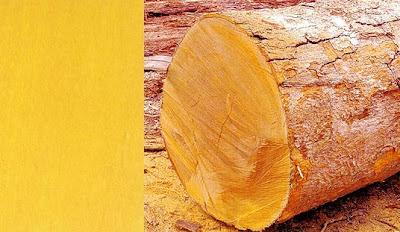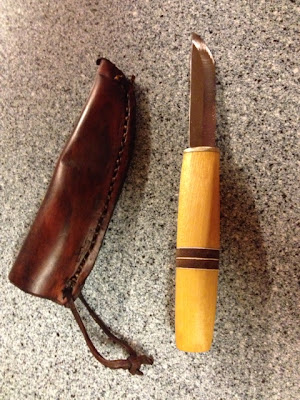I have been working on knives here at Naali
Knives, and after the holidays were over I decided to make a knife that as a
little different than most of the others I have previously worked on. I got a
gift certificate for Thompson's Scandinavian Knife Supply for Christmas and
have always wanted a leuku, so I tried my hand at making one.
One thing I wanted, aside from using a very
large blade, was to use Scandinavian arctic curly birch. I love this wood. It
is easy to work with and shape, sands to a smooth finish, and requires little
oil to bring the beautiful grains. I also wanted to use reindeer antler. I have
used this combination in knives before, but especially wanted to use these
materials for this knife, since it needs to have a solid, beautiful,
traditional handle.
Leuku knives are traditionally used by the Sámi
people of Lapland, and the name is a Finnish word for a Sámi knife.
It is also called "stuorra niibi", or "big knife" (in
the Sámi language). For more information and some wonderful photos of
leuku knives, check out Nordiska Knivar blog. It is an
excellent blog, one I highly recommend.
As I am not a puukkoseppämestari (master
knife smith in Finnish), I invariably ran into trouble making this knife,
albeit not very much that was ultimately noticeable. First, when drilling
the hole for the knife tang, I made it a little too long and thus had to leave
the handle longer than I wished. Still, no major problem, except for the fact
that the handle is longer than most leuku knives, but all in all it looks great
to me. Another thing I wished I had done is simply cut the tang to a shorter
length to avoid this altogether. Live and learn.
I had some extra pieces of arctic curly birch
from other projects, so I decided to use them as well. As you can see, I used
three separate pieces of wood, one piece of reindeer antler, and several red
fiber spacers.
For the blade, I chose a Kankaanpää 138x27
mm carbon leuku blade. Kankaanpää is the name of the elderly
knifemaker who hails from Kauhava, Finland in Southern Ostrobothnia, which
is historically a top knife making area of Finland. For some interesting
reading about this area, Google this term - "puukkojunkkari". It
translates to "knife fighter", and was a common term given to
troublemaking Finns in this region.
To
top it off, I made a leather sheath complete with Viking runes on the sheath. I
have been doing this for several knife sheaths I have made recently, and I
think it adds a nice touch. Let me know what you think as well. Here are some
photos of the finished product:




























